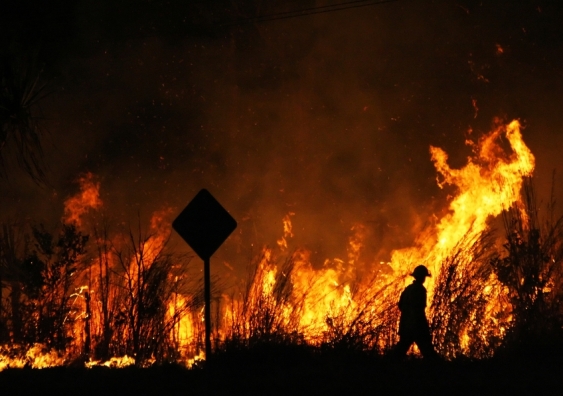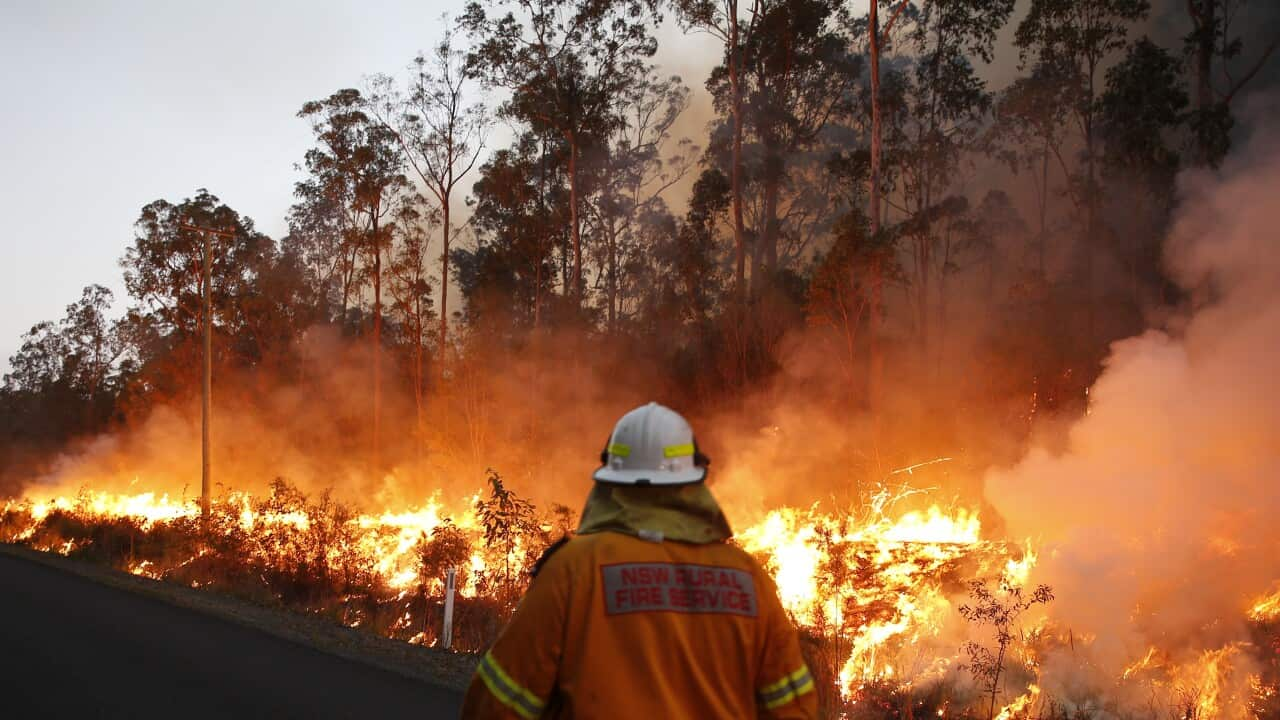BMP Insights: Trick Parts and Benefits of a Bushfire Management Plan
BMP Insights: Trick Parts and Benefits of a Bushfire Management Plan
Blog Article
Crucial Tips for Bushfire Administration to Make Sure Fire Protection

Comprehending Bushfire Risk Degrees
Comprehending the differing levels of bushfire threat is vital for effective planning and prep work in mitigating potential hazards to properties and lives. Bushfire threat levels are commonly categorized based upon elements such as weather, fuel schedule, topography, and historic fire behavior. By understanding these danger levels, areas and individuals can proactively execute strategies to minimize susceptability and enhance durability when faced with possible bushfire events.
The very first degree of bushfire risk is low threat, where the possibility of a bushfire happening and causing considerable harm is minimal. This level often happens throughout durations of reduced temperature levels, moderate humidity, and minimal wind speeds. Moderate danger levels suggest a boosted possibility for bushfires as a result of escalating weather conditions or fuel availability. High-risk levels represent a considerable danger, with problems for rapid fire spread and extreme fire habits. Extreme risk levels are the most crucial, presenting unavoidable threat to buildings and lives due to extreme climate problems and very flammable gas.
Recognizing these bushfire risk levels makes it possible for stakeholders to tailor their readiness and reaction activities accordingly, making certain a proactive and efficient method to bushfire management.
Creating a Defensible Space
Reliable bushfire monitoring begins with developing a defensible area around buildings to boost protection against possible fire threats. A defensible room is a buffer zone that creates a barrier between a framework and the bordering flammable plants. This area acts as a vital line of defense, giving firemens a safe area to operate and assisting to lower the danger of a fire spreading to the residential property.
When developing a defensible space, it is necessary to consider the layout of the home and the bordering landscape. Clearing up vegetation, specifically extremely combustible plants, within a particular distance of the building can assist protect against the fast spread of fires. In addition, preserving a well-irrigated zone around the building can better improve its defensibility.
Regular upkeep of the defensible room is essential to guarantee its efficiency. This consists of cutting looming branches, removing dead vegetation, and maintaining the location devoid of debris. By spending effort and time into establishing and keeping a defensible room, building proprietors can significantly improve their chances of shielding their homes and properties during a bushfire.
Applying Fireproof Landscape Design
When developing landscapes to reduce the danger of bushfires, integrating fireproof components is essential for boosting building security and lowering fire hazards. Carrying out fire-resistant landscaping includes strategic preparation to create a defensible space around structures. Start by choosing fireproof plant types that are less likely to ignite and produce reduced degrees of flammable products. Select plants with high wetness material, low oil content, and minimal dead plant life to lower the risk of fire spread. Bushfire Management Plan Additionally, maintain adequate spacing between plants and maintain them properly pruned to stop fire from conveniently leaping between greenery.

Creating an Emergency Discharge Plan
Establishing a comprehensive emergency discharge plan is critical for making sure the safety and security and health of individuals during possible bushfire events (Bushfire Risk). An effective emptying strategy should describe clear treatments to adhere to in case of a bushfire danger, consisting of designated emptying paths, setting up points, and communication methods
To start creating an emergency discharge plan, it is important to evaluate the details risks and susceptabilities of your location. Identify multiple evacuation routes that cause secure locations far from the fire, taking into consideration elements such as terrain, road access, and potential risks. Establish interaction channels to sharp residents of an approaching discharge, utilizing approaches such as sirens, message alerts, or door-to-door alerts.
Routinely evaluation and practice the discharge plan with all homeowners or area participants to make certain every person recognizes their obligations and functions. Conduct drills to examine the effectiveness of the plan and make any required modifications. By having a well-prepared discharge plan in position, you can improve the possibilities of a safe and organized evacuation throughout a bushfire emergency.
Maintaining Fire Safety And Security Devices
After establishing an extensive emergency situation discharge plan for bushfire incidents, it is vital to prioritize the normal maintenance of fire safety tools to guarantee optimal capability and preparedness. Normal upkeep of fire safety tools such as fire extinguishers, smoke alarm, emergency alarm, and lawn sprinkler is essential in safeguarding lives and residential or commercial property throughout a bushfire. Carrying out regular inspections, testing, and servicing of these tools by certified professionals is vital to guarantee they remain in functioning order when needed.
Fire extinguishers should be examined frequently for stress levels, visible damages, and correct functionality. Smoke detectors have to have their batteries replaced a minimum of when a year and undergo regular monthly screening to guarantee they are operational. Emergency alarm and lawn sprinkler must be inspected regularly to validate they are connected and operating properly. Furthermore, it is necessary to maintain fire safety equipment easily accessible, unhampered, and plainly labeled for easy identification throughout an emergency situation. By faithfully maintaining fire security devices, people can boost their preparedness and reaction abilities in the event of a bushfire.
Verdict
Finally, efficient bushfire administration involves recognizing danger levels, producing defensible rooms, executing fireproof landscaping, developing discharge plans, and preserving fire safety equipment. By adhering to these necessary suggestions, people can make sure better fire defense and security for their areas and residential properties. It is very important to focus on proactive actions to reduce the threats associated with bushfires and to be planned for emergencies.
By recognizing the nuances of bushfire threat levels, establishing defensible spaces, applying fireproof landscaping, producing comprehensive emptying plans, and making certain the upkeep of fire safety and security devices, people and neighborhoods can considerably bolster their strength versus the ravages of wildfires - BAL Report. These pointers are not only critical for protecting versus prompt fire dangers yet also for fostering long-lasting fire protection methods that can make a substantial distinction in the face of intensifying bushfire threats
High-risk levels symbolize a substantial threat, with conditions helpful to rapid fire spread and extreme fire behavior. Regular maintenance of fire security devices such as fire extinguishers, smoke detectors, fire alarms, and sprinkler systems is vital in guarding lives and residential property throughout a bushfire.In verdict, reliable bushfire monitoring entails recognizing threat levels, producing defensible rooms, carrying out fireproof landscape design, creating emptying strategies, and preserving fire security equipment.
Report this page